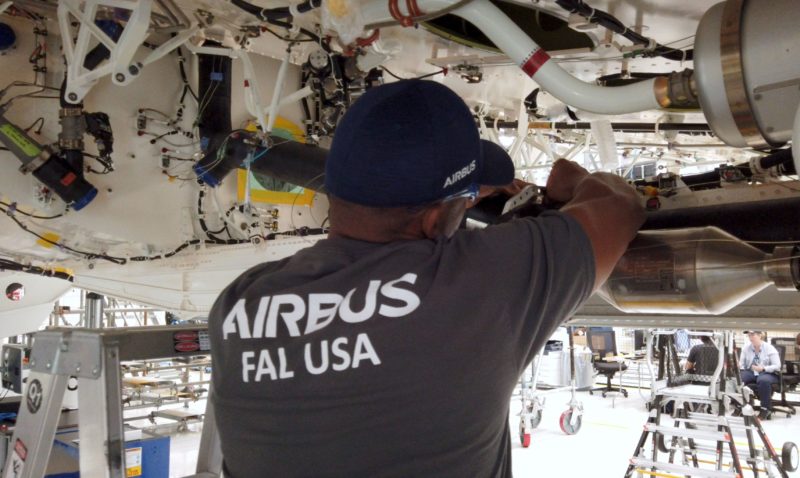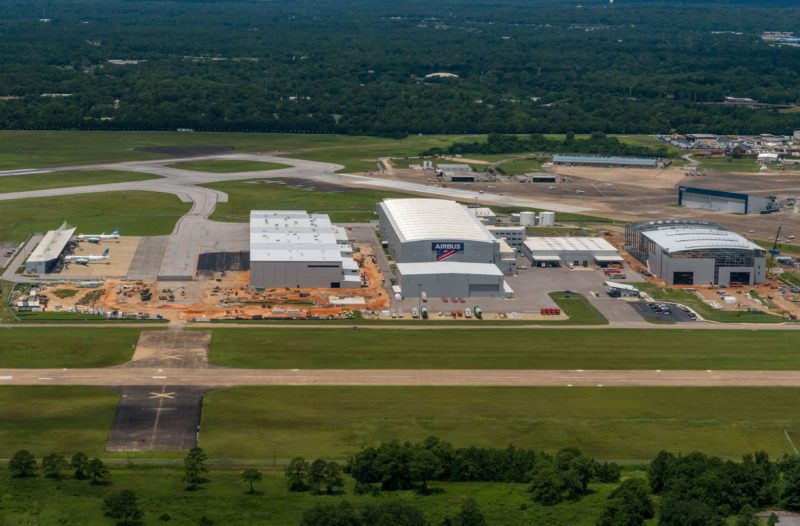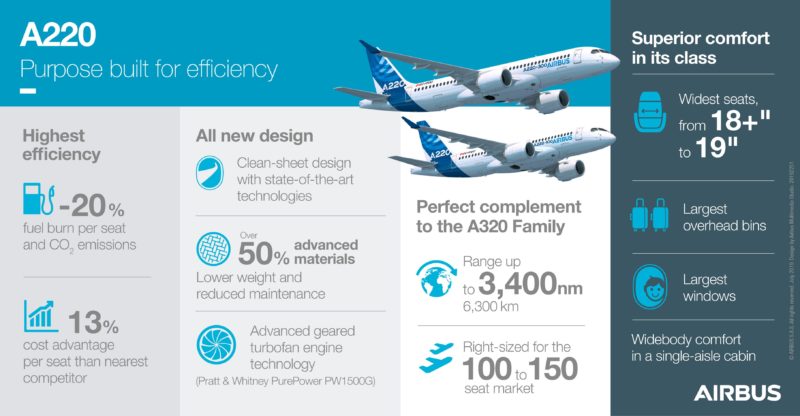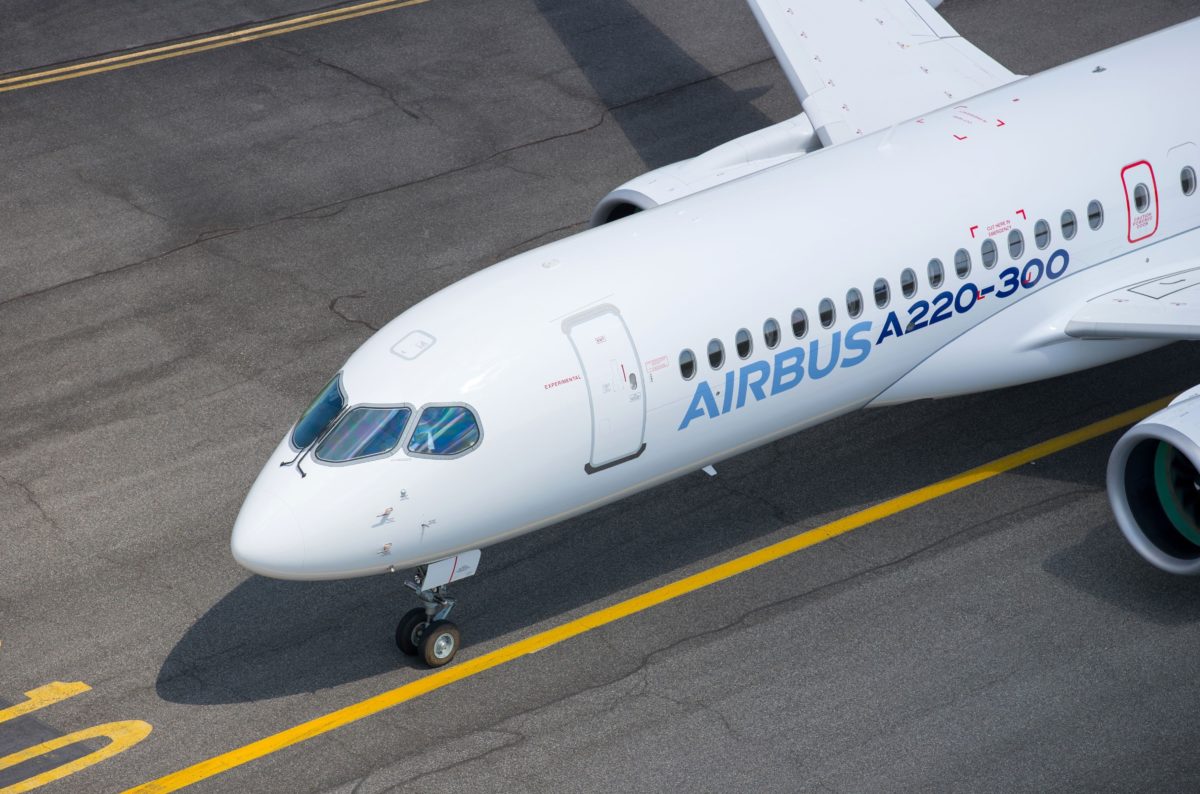It has been almost two years since Airbus announced plans to build the A220 in Mobile, Alabama; the production line has now officially begun assembly of the first aircraft.
Following training in Mirabel and Quebec, Canada, where the primary A220 production and delivery facilities are, the first team of workers commenced operations in the new Mobile building next to the existing A320 line.

Airbus notes the additional production line provides around 400 new jobs within the area, as well as broadening their commercial aircraft manufacturing footprint.
“With Mobile, and our production network in Asia, Canada and Europe, we have strategically created a worldwide industrial base to better serve our customers.”
Airbus Americas Chairman & CEO, C. Jeffrey Knittel
The first aircraft in assembly is an A220-300 scheduled to be delivered during the third quarter of 2020 to Delta Air Lines. Although a lengthy build, launching a new production line with a new aircraft requires a firm and established set of knowledge in all the workers.

Additionally, suppliers have to prepare for greater production output and new delivery locations. By the middle of the next decade, Airbus aims to have Mobile produce 40-50 A220 aircraft per year.
Although construction of Airbus’ $300 million investment is still ongoing, completed structures as well as spare room in the A320 line is allowing the workers to commence the work. The first large components, such as the cockpit and fuselage sections, arrived at the facility in June.

The initial plan was to produce the A220 in the United States as a way of avoiding the threat of tariffs on the import of the aircraft. Despite the growing fear, Bombardier won the dispute before handing over majority rights to Airbus, who elected to continue their US plans anyway.

As of the end of June 2019 Airbus recorded a backlog of orders for the A220 of 551 aircraft. Offering a 20 per cent reduction in fuel burn per seat compared to the previous generation competing aircraft; Airbus states the A220 has all the credentials to win the majority of the 100-150 seat market, representing over 7000 aircraft over the next 20 years.




